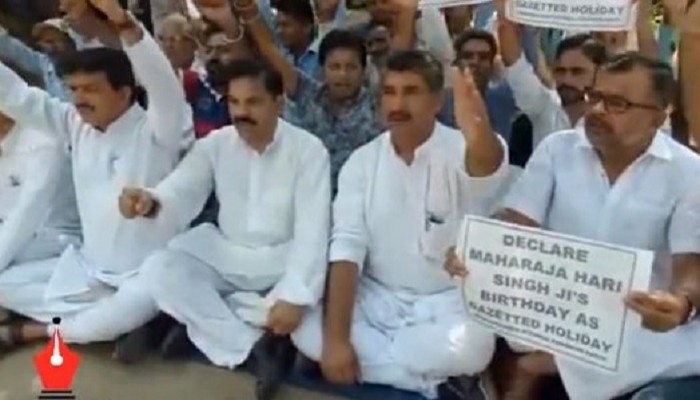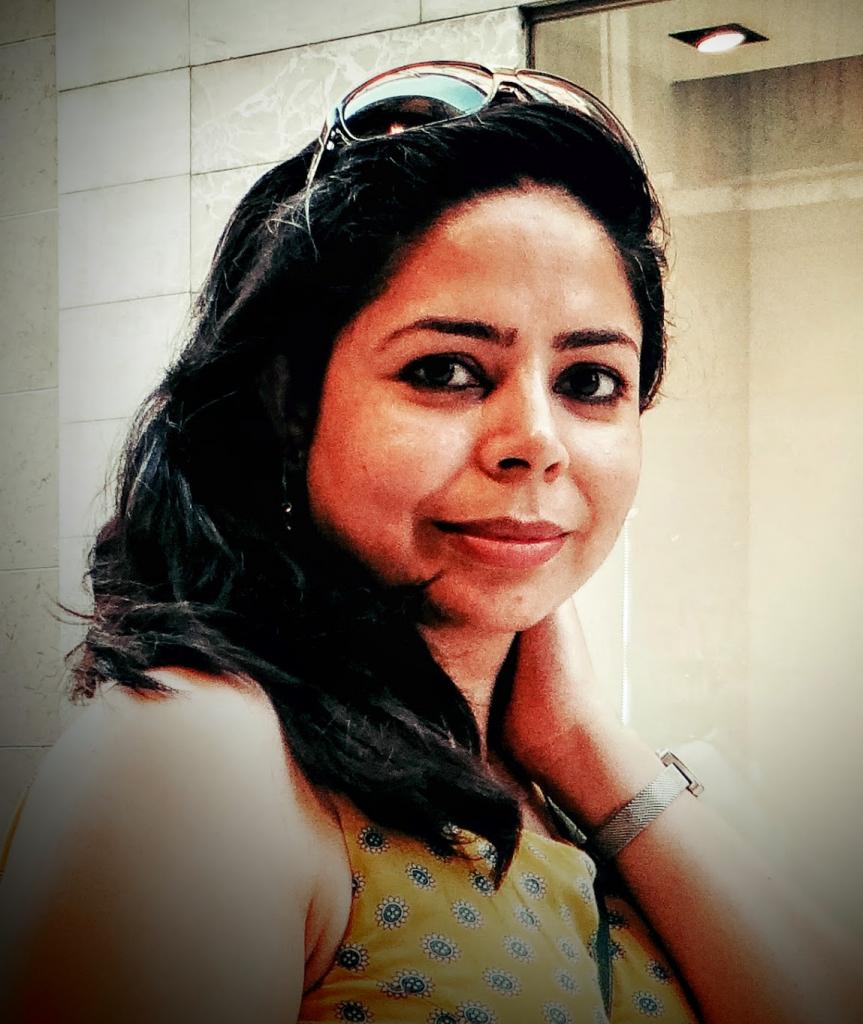Discontent in Jammu is not good news for ruling BJP-PDP Coalition
- In Politics
- 02:26 PM, Sep 24, 2017
- Anupama Handoo
On 23 September 2017, a new kind of noise was heard from Jammu region. People wearing multicolored pagdis and wielding naked swords were seen on the streets of Jammu city demanding a holiday on Maharaja Hari Singh's birthday. Speeches and sloganeering followed and as happens on these events; polarized enthusiasts vehemently put forward their political views including their own clever solutions for the masla-e-kashmir (the kashmir issue). PDP led Jammu and Kashmir government had rejected the demand for the state holiday and therefore Mr Modi was vilified for not being Hindu enough and for taking the Hindu vote bank for granted. PoK people and Kashmir valley intellectuals were keen to jump on to the bandwagon, changing their social media profiles and writing eloquently about the great visionary who dreamt of an independent Jammu and Kashmir. The Maharaja was hailed as the very first freedom visionary and a patriot of the nation of Jammu and Kashmir. The separatist intelligentsia referred to him as a person deceived by internal and foreign conspiracies led by Britain and implemented by India. A person who first envisioned an independent constitutional monarchy in the Riyasat-e-Jammu and Kashmir but for the cunning plans of rivals India and Pakistan.
The multicolored pagdi clad sheep followed and endorsed the narrative obediently.
I beg to differ.
It's a well-known fact that Maharaja Hari Singh was the Hindu ruler of Jammu and Kashmir in 1947, when the subcontinent was partitioned. Many voices amongst the Muslim Majority population of the State believed that Pakistan was their natural home. However, Maharaja Hari Singh was not sure if his Dogra, Pandit and Buddhist subjects would be happy in the newly formed Muslim country. His focus was on the wellbeing of his subjects and he procrastinated. When Lord Mountbatten came to see him at the behest of Nehru, he avoided the conversation. Even when his generals started deserting his Army, he was indecisive. His dream was that of an independent Jammu and Kashmir spanning Gilgit Baltistan on the west and bordering Tibet and China on the east. But with neighbors like Pakistan, that was not to be. Pakistan wanted Kashmir for themselves, a decision purely based on two nation theory and religious overtones of the partition. After waiting patiently for 3 long months in face of a stand-still agreement, Pakistan sent kabailis (tribal militia) to attack Kashmir. Maharaja Hari Singh asked India for help in exchange for Accession to Indian State and the rest is history.
This quick history lesson was not to present Maharaja Hari Singh in bad light. His only wish was that his subjects live happily without religious strife in an independent princely state- Riyasat of Jammu and Kashmir. Being a border state between big countries like Pakistan, India and China was a huge gamble and sooner or later, its sovereignty would be challenged. Despite that he was willing to take the risk. Historians can judge him on his lack of farsightedness and over estimation of his strength. I am no historian. I am only concerned about using Maharaja Hari Singh's grand vision of Independent princely state of Jammu and Kashmir as a rallying cry by separatists. A war cry that is part of the bigger picture of division of the border state.
The alternate war cry by intellectual separatists has assumed following narrative. Maharaja Hari Singh was a great visionary. He united the princely state of Jammu and Kashmir from Gilgit Baltistan to Tibet. It was the Dogra rulers who defended the borders of India. (So far so good). Maharaja Hari Singh wanted a separate Independent Riyasat of Jammu and Kashmir. His Prime Minister Ram Chandra Kak, a kashmiri pandit advised him on maintaining equal distance from India and Pakistan. On his advice we have a separate flag, Constitution and a special status as citizens of J&K. (Slightly uncomfortable). Even Kashmiri Pandits want a separate independent Jammu and Kashmir. Pandits, Dogras and Muslims are fighting side by side to realise the dream and vision of Maharaja Hari Singh. People across the Pakistan border are our brothers and part of the same heritage. We all want an independent Riyasat where travel and trade are not hampered by the line of control. Let's make the vision of Maharaja Hari Singh a reality. (Very concerned).
When this alternative war cry goes out, side by side with the armed Islamic struggle masked as freedom struggle of Kashmiris, it creates confusion. Waving ISIS and Pakistani flags the stone pelters shield the AK-47 wielding gunmen with slogans of 'we want freedom’. Lest you are confused, in the very next breath they do say 'aazadi ka matlab kya- la ilaha Illalha’. Selective media is projecting the armed islamic separatist movement as realization of Maharaja Hari Singh's dream of an independent Riyasat. A new narrative is born and propagated.
Recent comments by Zakir Moosa dispelled all confusion about the armed struggle in the valley of Kashmir, when he said that the struggle is really about establishing a Sharia state. We have examples of independent Islamic states from Pakistan to Bangladesh where indigenous non-muslim population just evaporates in a few decades. A Sharia state where non-muslims are converted, killed and expelled at an alarming rate? Non-muslims still form half the population of Jammu and Kashmir in secular India -we just need to look across the border to the demographic makeup of PoK to understand the reality of living under Nizaam-e-Mustafa. That is likely to be the reality of Riyasat-e-Jammu and Kashmir under current separatist leaders. Over a few months, merger of Riyasat-e-Jammu and Kashmir with Pakistan will become a reality. The Riyasat will become another Balochistan. Is that really the Riyasat that Maharaja Hari Singh dreamt of and the intellectual separatists are drumming about? Or are we just handing over a justification and a historical context to the Islamist separatists on a plate?
The problem with these half-baked hook-me-anywhere narratives is that these go out of control very quickly. One day we are accusing Pakistan of exporting terror through PoK; next day we are demanding opening of trade routes and free travel across LoC. One day we are saying that ISIS has infiltrated the Kashmiri armed freedom struggle; next day we are saying independence and freedom were Maharaja Hari Singh's dream. One day we are saying that Article 35A and 370 are discriminatory as these take away the state subject right of women marrying outside Kashmir and give state subject rights to PoK citizens; next day we are saying that these articles were modelled to protect the special status of the Riyasat. One day we say that the brave Dogras protected and expanded the borders of India; next day we say that Dogras are party to the idea of independent Jammu and Kashmir. Narratives take on a life of their own and people with ulterior motives take no time to hijack these for their own ends.
Personally, I admire the courage and kindness of Maharaja Hari Singh. I also think that his birthday should be declared a state holiday. The history and times of this brave Dogra ruler should be celebrated through books and in museums, through movies and plays. However, that's where we should stop. I was born in an independent democratic secular republic, India. I do not believe in the rights of dynastic rulers, kings and nawabs. That was pre-1947 and has only a ceremonial role in today's world. I do not believe in the idea of a Riyasat that brings together the demographically altered PoK citizens and militancy inspired Kashmiri youth under one banner. I reject this marriage of convenience because that banner will not be of a benevolent secular king but that of religion fueled turmoil of ISIS. The context of the national and international agendas has changed and the narrative of Riyasat does not fit in at all. The sooner we unplug the concept of Riyasat from our collective narrative, the easier it will be retracting the tactile covert support to Jammu and Kashmi’s separatist intelligentsia.
Disclaimer: The opinions expressed within this article are the personal opinions of the author. MyIndMakers is not responsible for the accuracy, completeness, suitability, or validity of any information on this article. All information is provided on an as-is basis. The information, facts or opinions appearing in the article do not reflect the views of MyindMakers and it does not assume any responsibility or liability for the same.







Comments